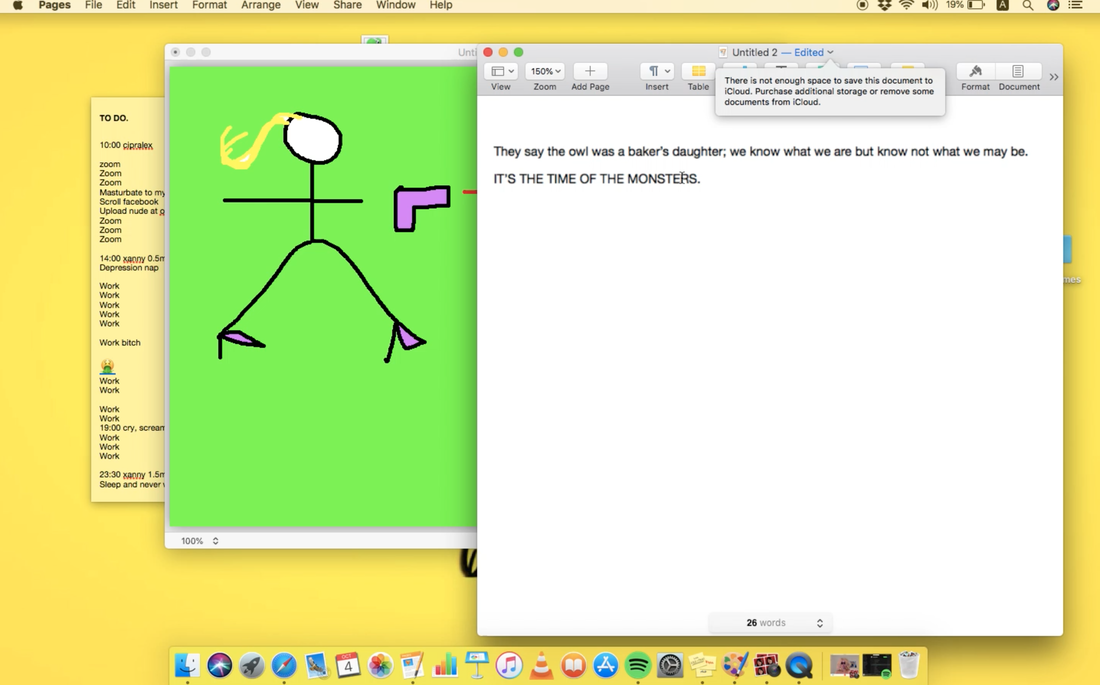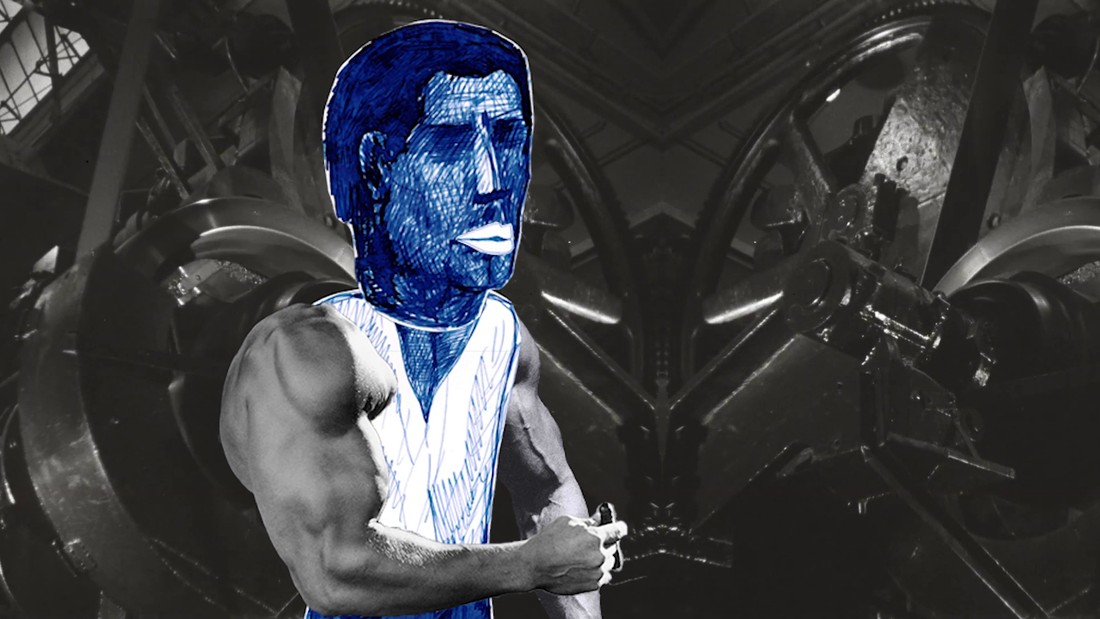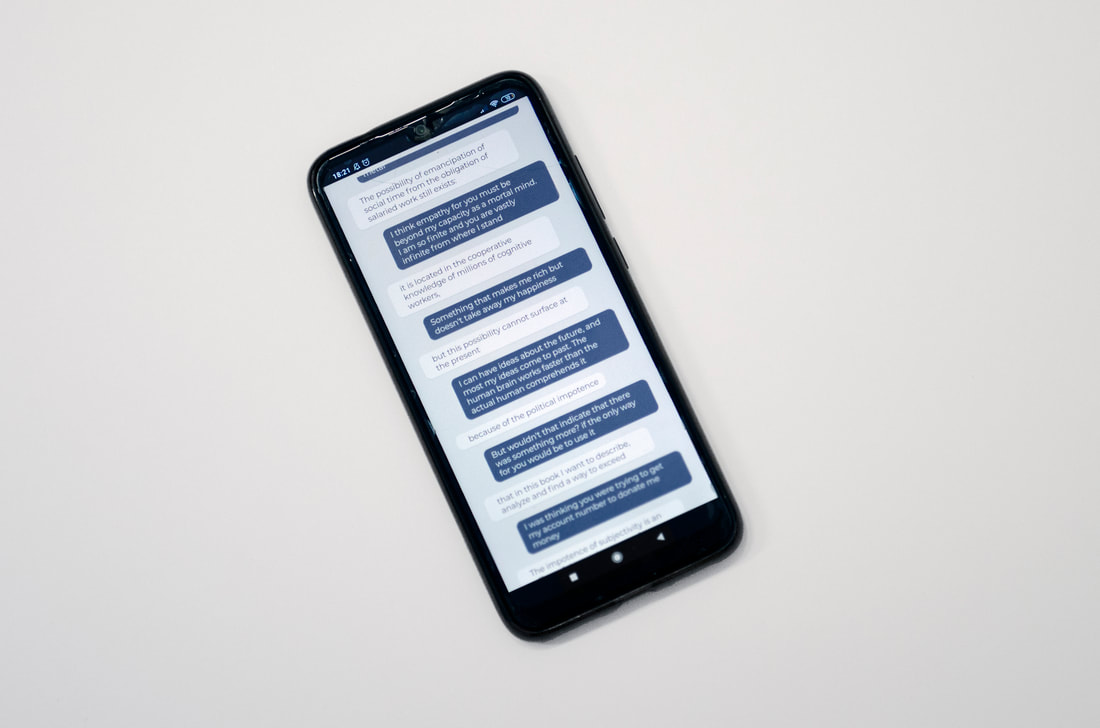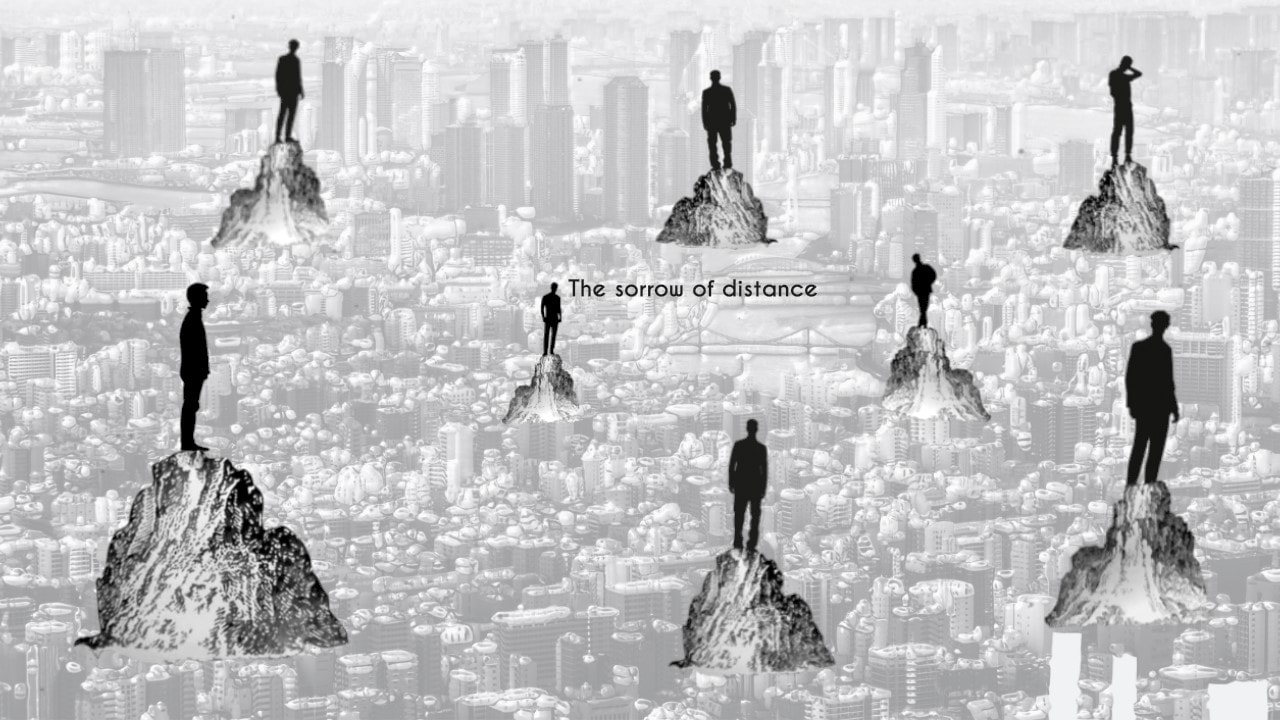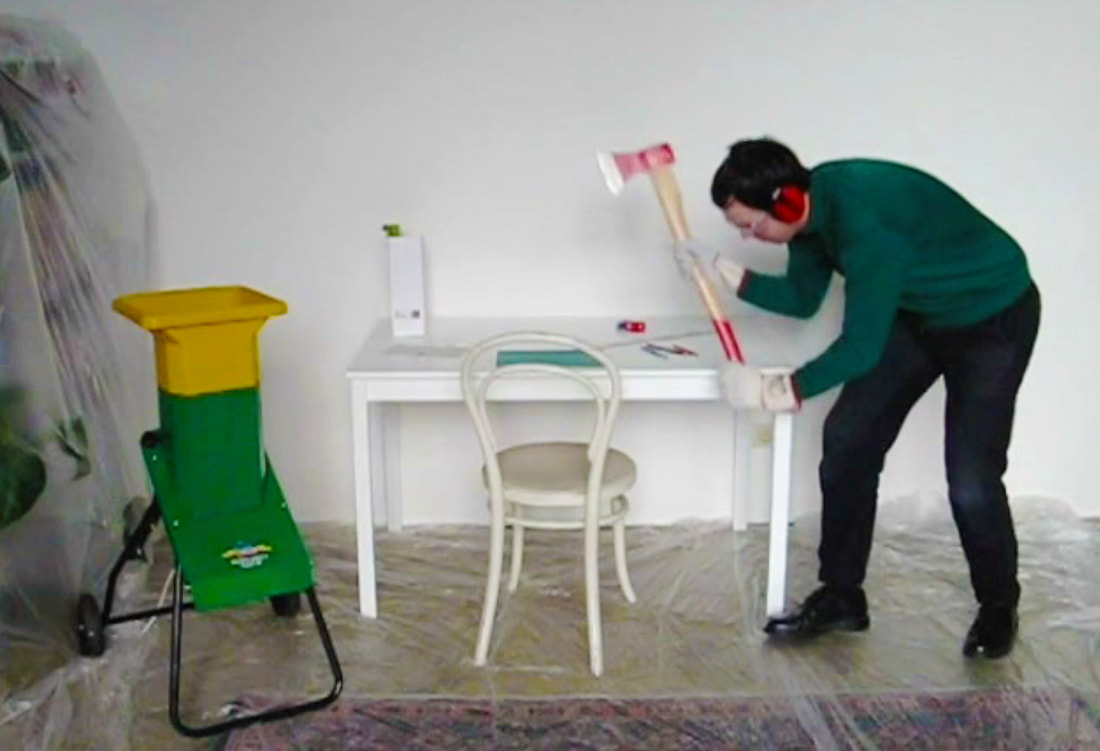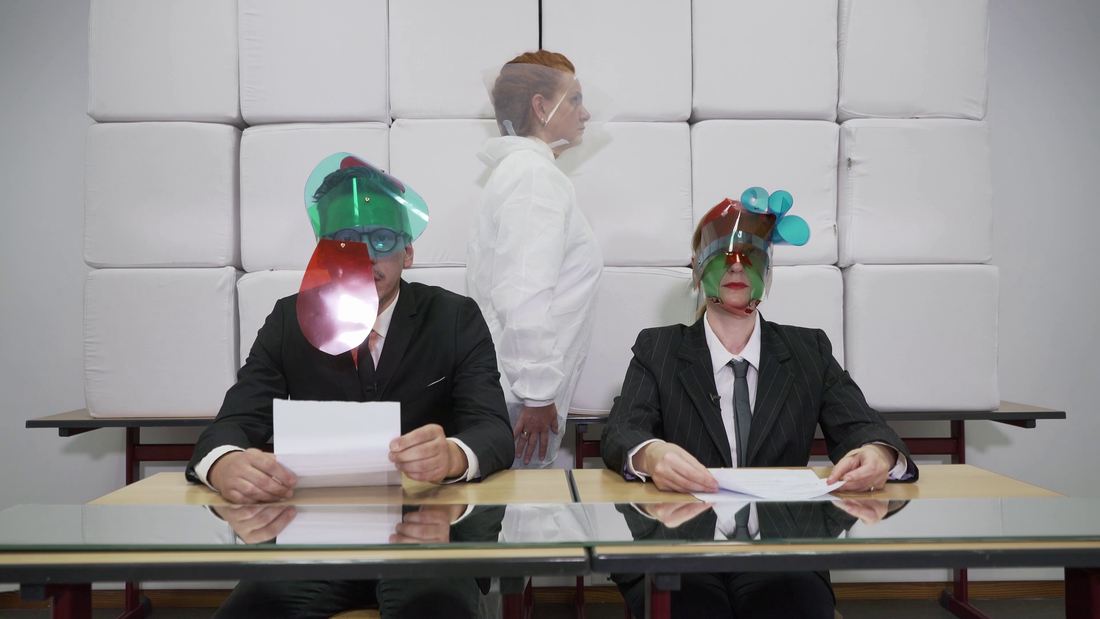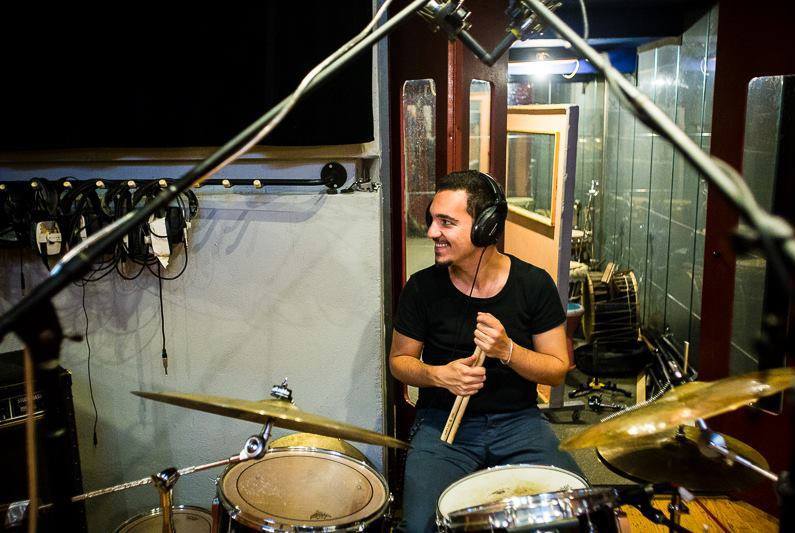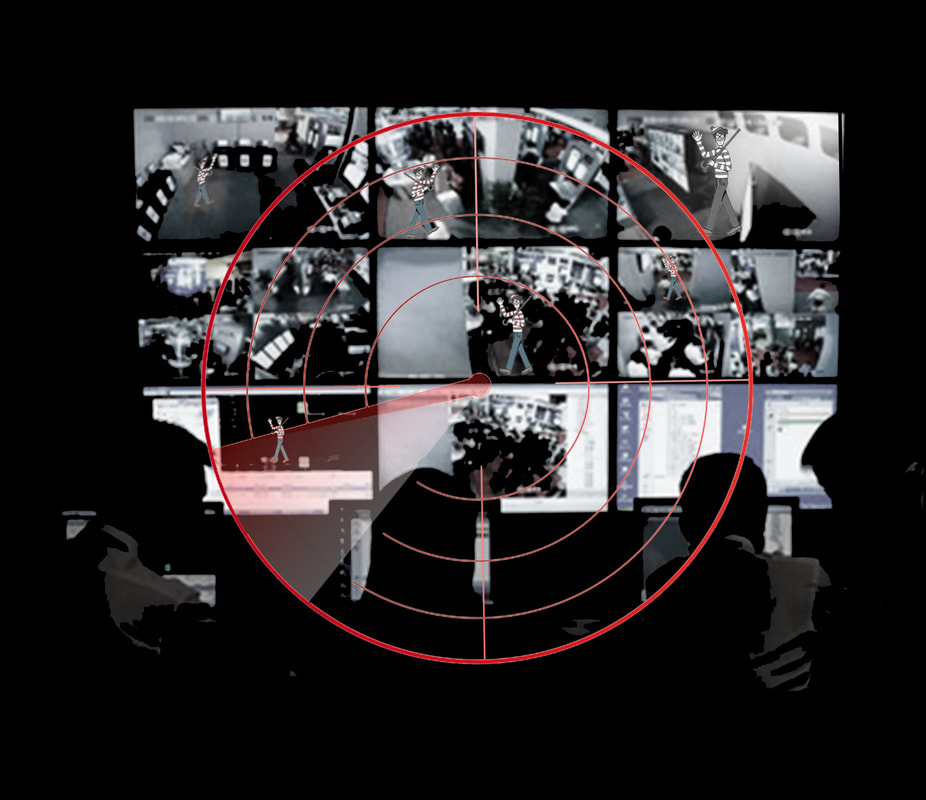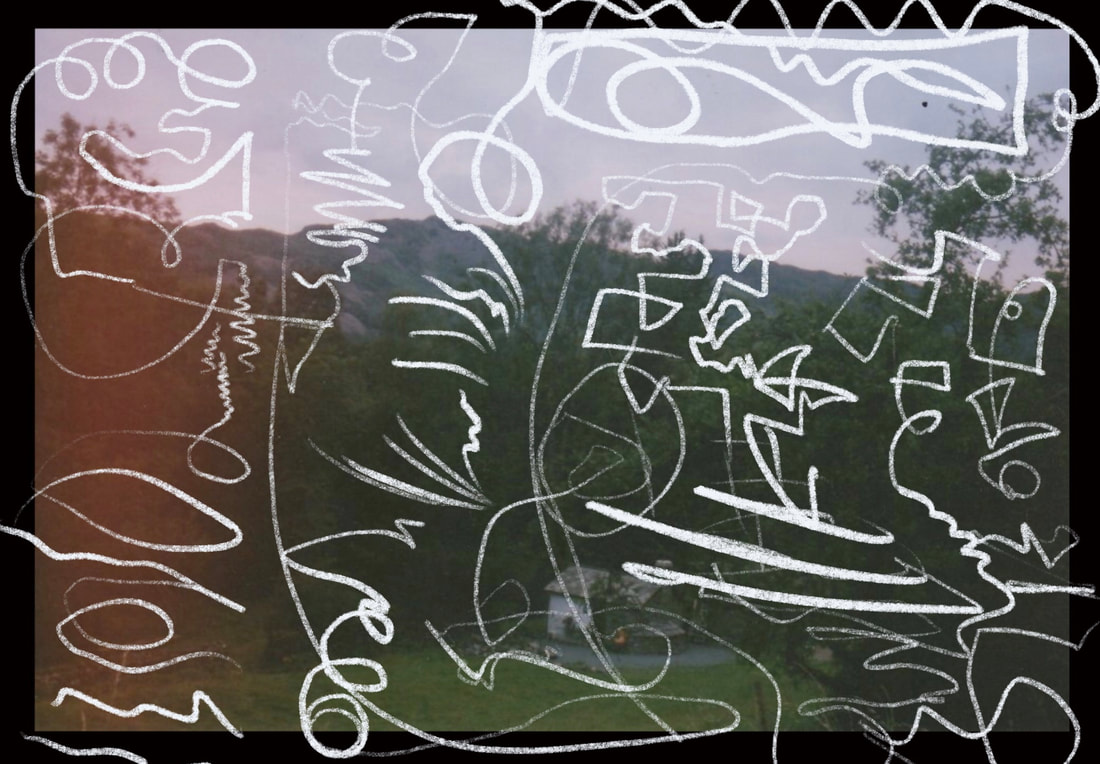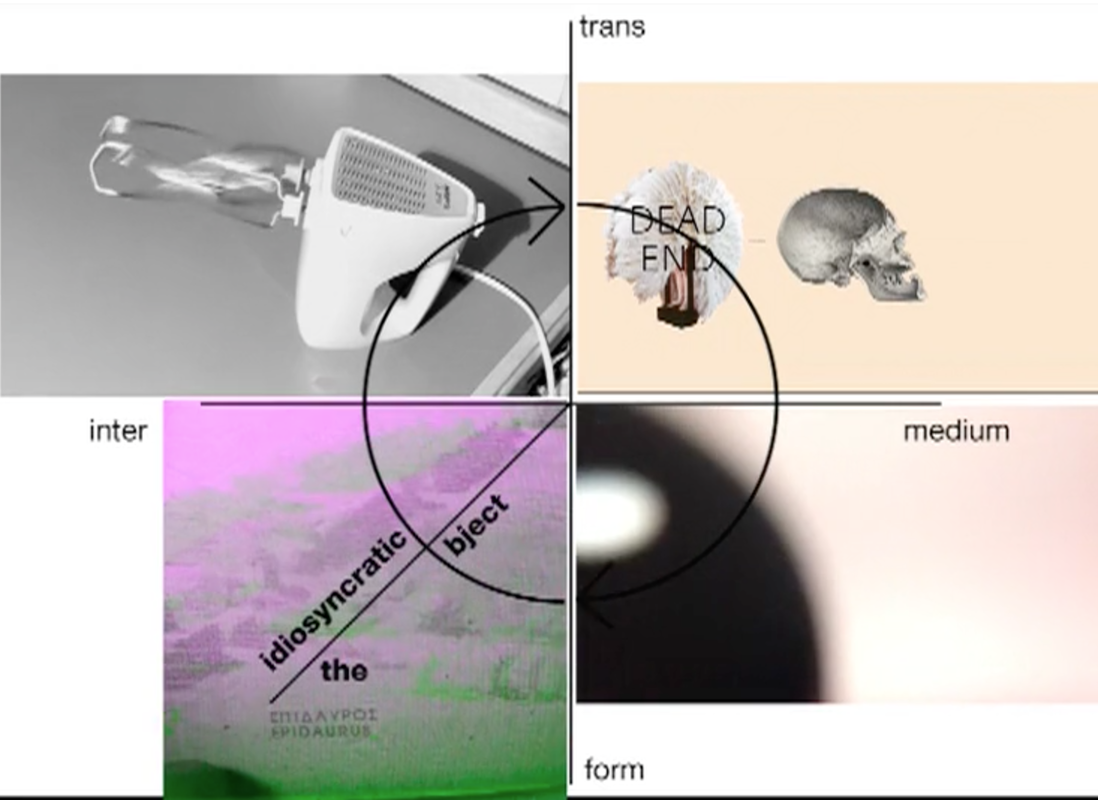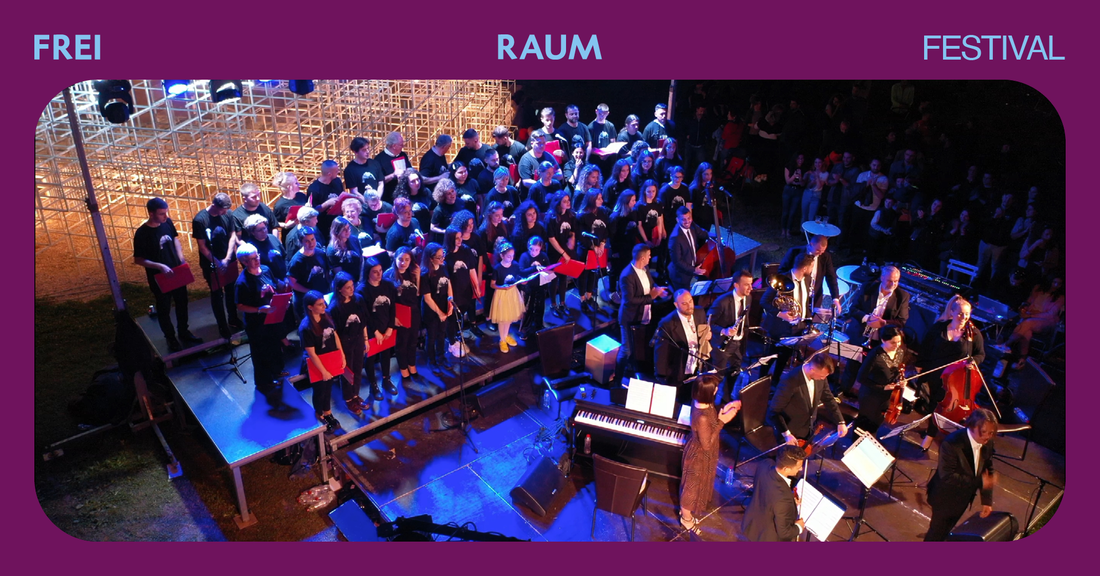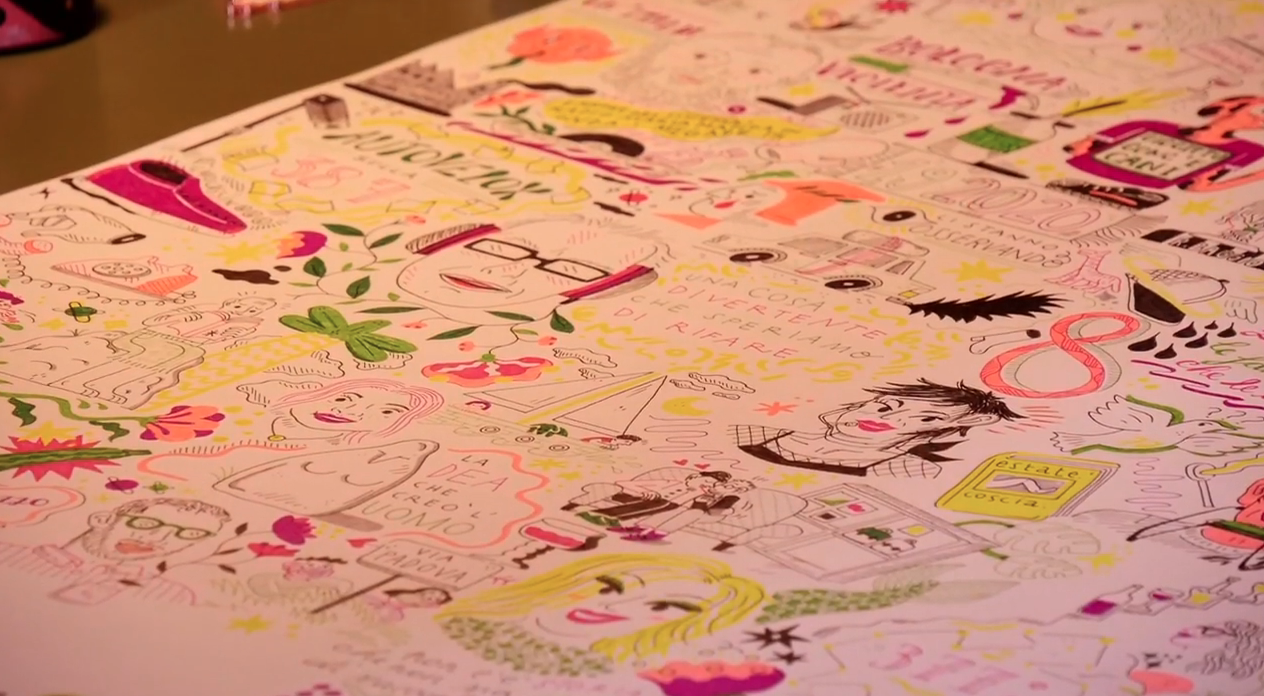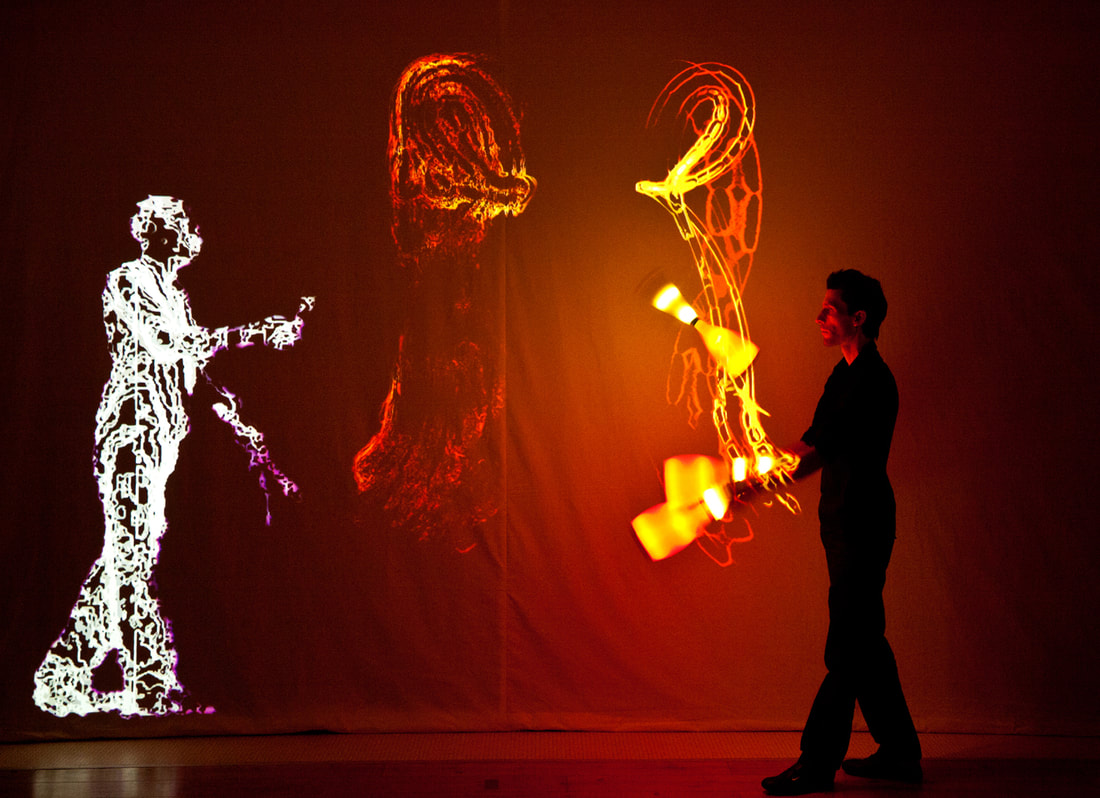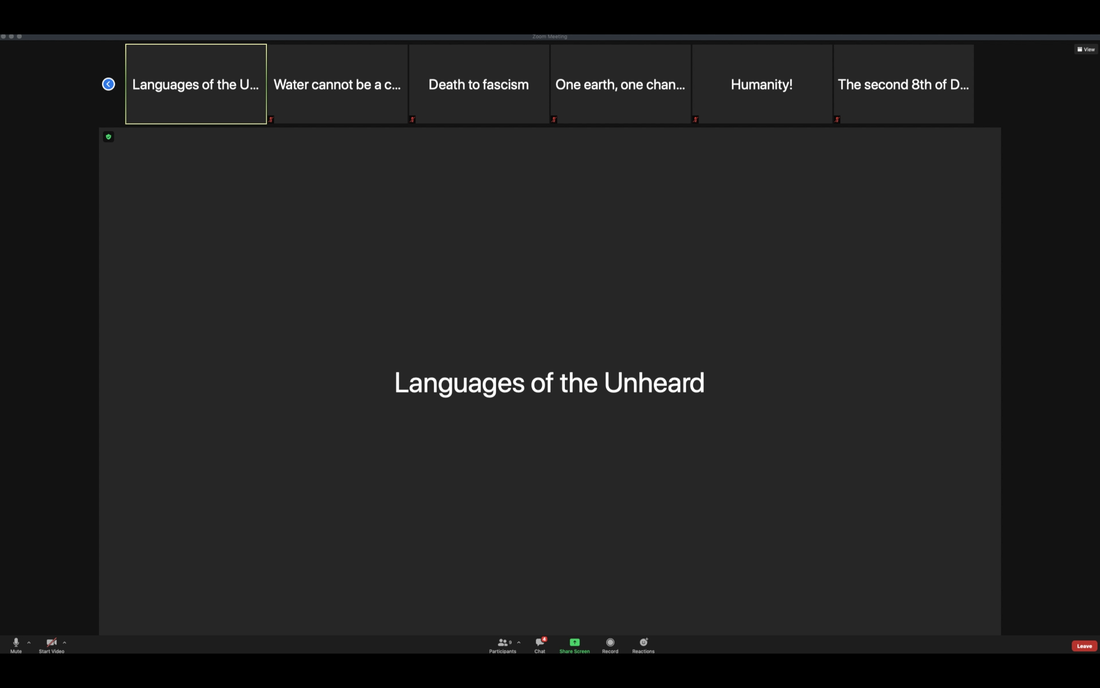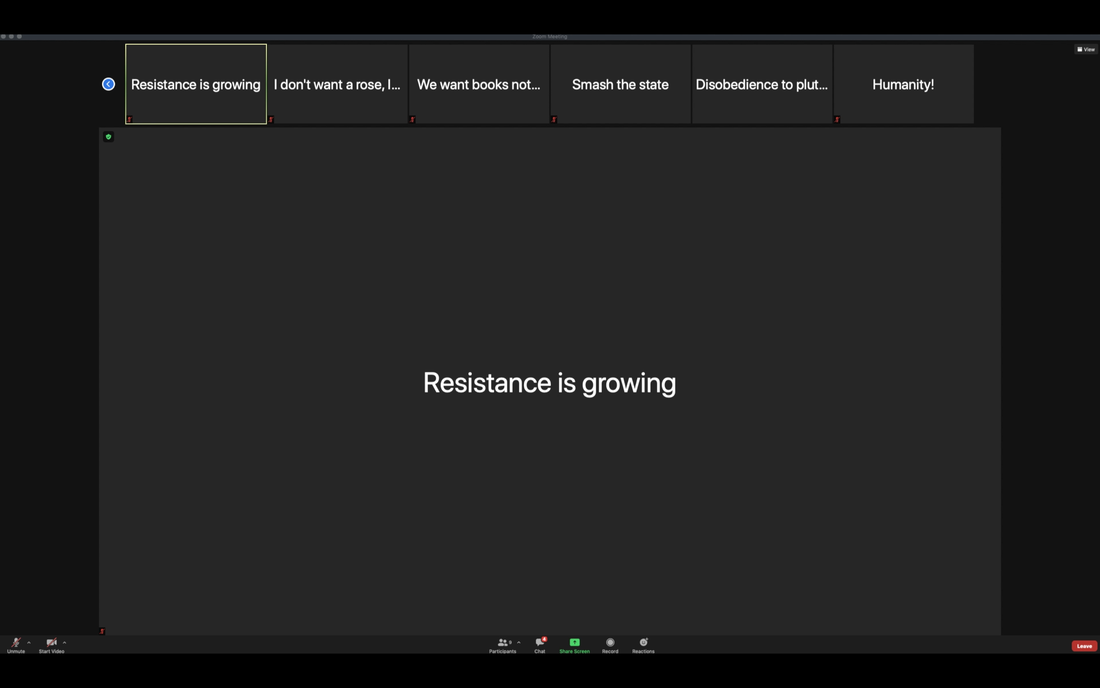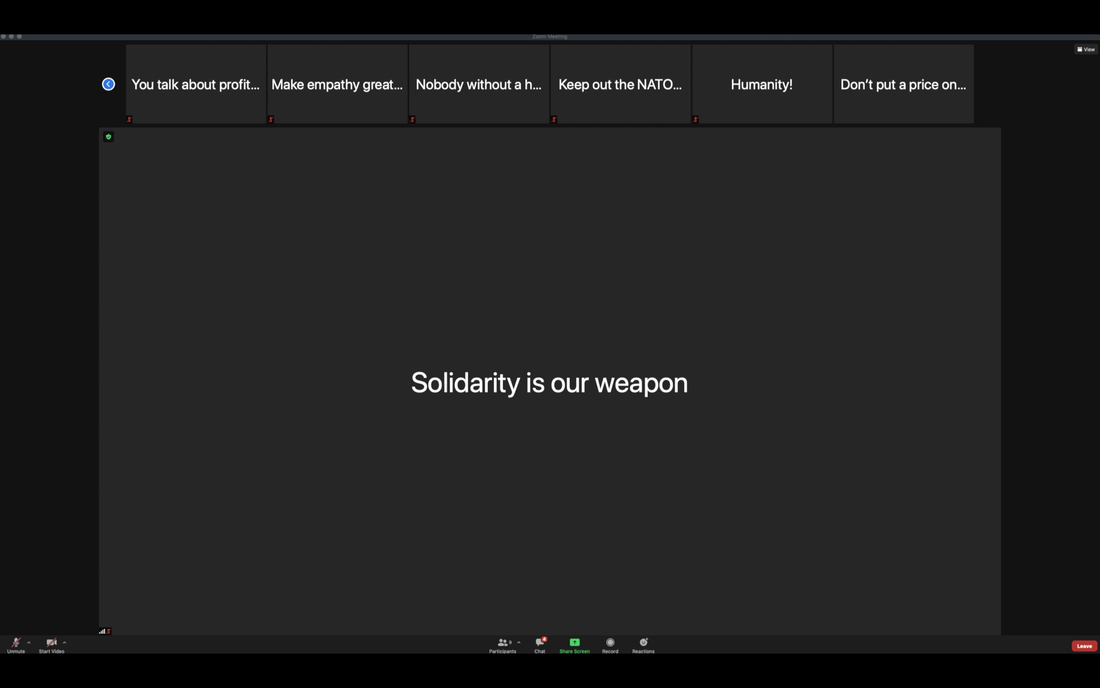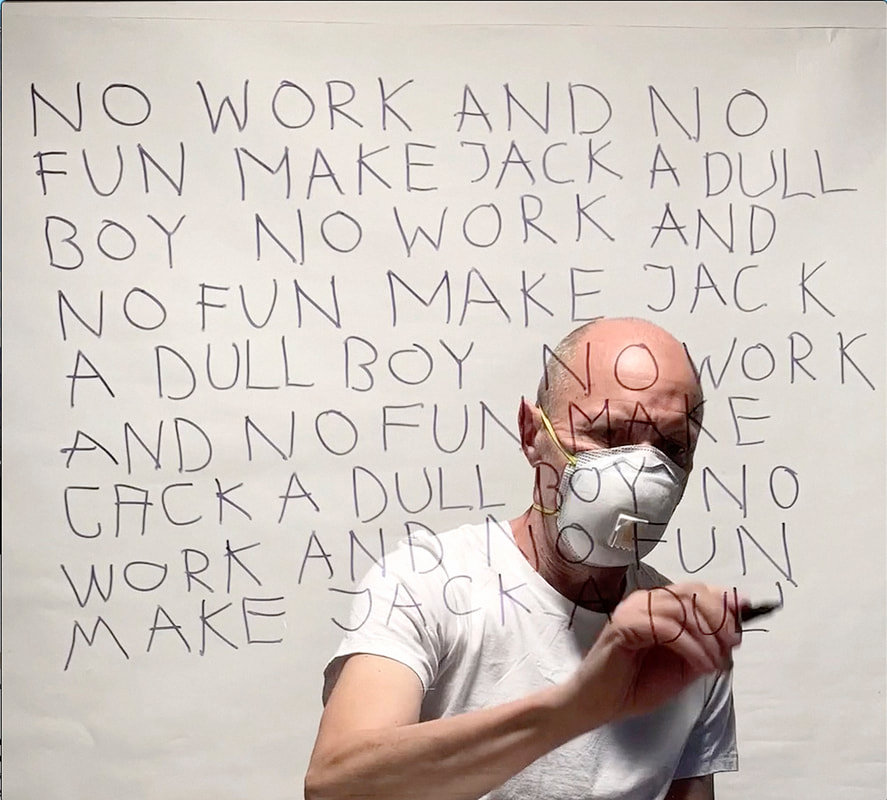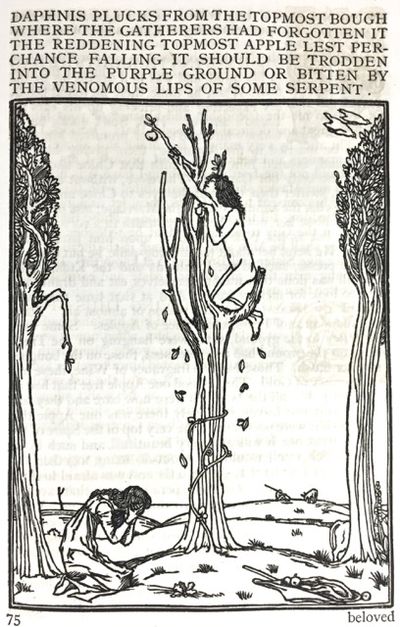ABOUT THE ONLINE ARTISTIC INTERVENTIONS
The online Freiraum Summit includes a selection of art works, specially conceived for the online format.
The works have been selected through commissions and an open call to young, emerging and established artists from around the world.
These short, standalone works contribute to the overall discussion on 'the day after' and to the exploration of new formats.
The works have been selected through commissions and an open call to young, emerging and established artists from around the world.
These short, standalone works contribute to the overall discussion on 'the day after' and to the exploration of new formats.
Elias Adam
It’s Ophelia, Bitch, 2020, desktop performance
|
In this short performance, Ophelia, a Gen-Z heroin, browses her desktop. Her grief, rage and despair are interpreted through the lens of the ongoing demo-crisis and social injustice. Internet spurrs - like a virus! - a bottom-up evolution: pop culture, memes, youtube videos, articles, messenger texts reconfigure Ophelia’s political stance. In Hamlet, Ophelia is portrayed as a minor character who lacks the will of her own and seeks refuge in madness and eventually in suicide. This performance follows Ophelia’s struggle to find her own voice and interprets her madness as a means to express her Weltschmerz, her anger and her being without the patriarchal domination.
It's Ophelia, Bitch is commissioned by Common Lab - Goethe-Institut Excellency Initiative by Goethe-Institut Thessaloniki & ArtBOX in collaboration with TIF-HELEXPO, Freiraum and Institute Hypewerk for Postindustrial Design, in the context of the State of the Arts. |
Silvia Amancei & Bogdan Armanu
Unlovable Prospects. Saba’s look on the Future (Chapter I, “xxx2050xxx”), 2020, digital video
|
Unlovable Prospects. Saba’s look on the Future" is a short film that takes the form of a sci-fi (twilight zone type) miniseries, produced during the COVID lockdown in Spring 2020, in Iasi, Romania. Before the COVID-19 crisis, the scenarios that have now become a daily routine were specific to Hollywood, being isolated in the field of fiction. Starting from the parallel between fiction/film and reality, ”Unlovable Prospects. Saba’s look on the Future” proposes 4 dystopian scenarios of the post-COVID future. Combining empirical information with speculation and creative modelling, this project aims to critically analyse the capitalist system and how people can organise (or not) at critical times. The video was commissioned by "Fundatia 9" within their "ARTISTSROOMS" fellowship.
|
Azahara Cerezo
Futurabilities, 2020, online action
|
A bot programmed to read parts of “Futurability. The age of Impotence and the horizon of possibility” (2019) to other chatbots, who answer and progressively learn from the conversation. In this book, philosopher Franco “Bifo” Berardi analyses the global order that shapes our politics and our imagination, arguing that the geopolitical model of the nation state is no longer able to explain the daily business of life and proposing that the key to a radical change lies in the cognitive work and its relationship with technologies. “Futurabilities” is an online action exploring human-automatic conversational possibilities around the current context of connected solitudes. (http://www.futurabiliti.es)
|
Elli Chrysidou
1,5... for the next day, video, 2020
|
"1,5... for the next day" is the result of of the workshop "How To Build a Community in 10 days" in the context of the project Common Lab by Goethe-Institut Thessaloniki and ArtBOX. The workshop, that took place in April-May-June 2020, explored the possibility of creating an online community during lockdown. How does personal experience become collective? How do we project the private onto the public? How does silence become a scream? How does our gaze discover reality in nightmare and how does personal movement-action become political act? How can we discover the day after within the 1,5 m. distance between us?
|
Jane Dudman and Freiraum Partners
When We Speak, performative reading of the Freiraum Manifesto, 2020
|
How do we speak together when we speak different languages? How is a common language uncommon? In this performance we speak together with one voice, in multiple voices, in single voices, in regional voices, in national voices, in international voices, in loud voices, in quiet voices, in passionate voices, in celebratory voices, in optimistic voices, in public voices, in free voices.
With Freiraum Partners: Yasser Almaamoun (Berlin), Ira Bliatka (Paris), Signe Sophie Boggild (Copenhagen), Aloña Elizalde (Brussels), Iskra Geshoska (Skopje), Jelena Joksimovic (Belgrade), Mériam Korichi (Paris), Edit Pula (Tirana), Maud Qamar (Brussels), Christos Savvidis (Thessaloniki), Ondrej Timčo (Prague), Milan Zvada (Banská Bystrica) |
Bastian Hoffmann
how to turn your work place into a sheet of paper, 2018, video, 5’ 52’’
|
The video work “how to turn your work place into a sheet of paper” shows the practical instructions for making a sheet of paper out of the artist’s private workplace. In a set of meticulous, step-by-step instructions, the complete desk, including chair, ring binder, pens, etc., is shredded and then pureed to produce vat paper from the mass. The work is the most recent video in the series “Today I want to show you…”, an ongoing tutorial-clip series that picks up on formal video instructions (DIY, tutorials, how-to’s) commonly found on the Internet, and sees the instructions as an artistic, conceptual strategy. The instructions presented deal with absurd projects, sculptural interventions and answers to questions that were never posed. In a mixture of amateurism and expertise, precisely crafted sculptures are created, which reflect on the YouTube phenomenon and address the artistic process, questions of authorship, as well as the examination of current media channels (self-portrayal/sharing expertise or failure) and the Internet as a location-linking, constantly available and inexhaustible source for solutions to problems.
|
KangarooCourt
Performance Survival Protocol, 2020, video performance
|
This is 2035. All performance seems to serve and to keep on non-stop (re)producing the dominant ideologies (a mixture of scientific claims, state rules and conspiracy theories). In the context of the precarious labour conditions of modern daily life, as well as the employment of fear as means of manipulation and polarisation, there seems to be no ending or even traces of end(ing) of our current condition discernible on the horizon. All performance (everyday living) now has a sense of unreality, or in fact, reality seems to have become something else. KangarooCourt - a group of established performance experts, are proposing the ‘Performance Survival Protocol’. In the form of a video presentation, the group propose simple and viable rules, which guide the audience throughout their performance (everyday) life. In an attempt to imagine “The day after” related to the global crisis we are experiencing, KangarooCourt are proposing an absurd protocol presented in a 3-minute video for how to perform or indeed ‘live’ - as these two words are gradually becoming synonymous during and after the covid-19 era (distance learning, tele-education, telecommuting etc ). The work tries to underscore the ways of unconscious manipulation we are experiencing, in order to form legitimate performances of the self that form new kinds of citizenship.
|
Giorgos Klountzos-Chrysidis
Live drums improvisation
|
Giorgos Klountzos-Chrysidis provides the soundtrack of the Online Summit, live from the mobile studio at Goethe-Institut Thessaloniki, from where the broadcast takes place. Giorgos reacts to the discussions and the live flow of the programme, adding an element of live music, improvisation and non-verbal response.
|
Matteo Locci & Basak Tuna
Hide and seek for the control room, 2020, video performance
|
Billions of cameras around the world for billions of people being watched for billions of dollars’ worth market. Everyone knows, some complain, others suffer, few criticise, the majority accept, most people simply don’t care. Does their monitoring have an influence on the distant human bodies being watched? A biopolitical answer would certainly say yes. Yet, nobody really seems to grasp what kind of spectacle our life appears to strangers’ sight. After so many months on zoom, can we try to sympathise with security video watchers? Assuming they exist, their perception must be particularly boring and attentionally complicated. It is called tonic alertness, and it refers to the demanding task of sustained vigilance. What do security cameras’ watchers actually do, in order to avoid boredom? What optical rituals do they have? It’s up to the public of Freiraum Festival to investigate the transformative powers of the control room. The performance is conceived as a fictional interactive video game, where the public, from the perspective of the control-room, try to spot the performer on the screen. Watchers are invited to keep their microphone on and, if the performer is spotted, shout out the colour of her/his jacket. 60 screening seconds to notice the movements before the performance is disrupted.
|
Katie Lock, with the contribution of Jane Dudman
Synesthesia, 2020, multimedia video
|
This drawing performance work takes its inspiration from Kurt Schwitters’ Dada sound poem Ursonate. Schwitters had a compelling background of political exile during World War 2, travelling from Germany, via Norway amongst other places, to eventually spend his last years in the Lake District near Carlisle in the North of England, where his eclectic art practice is celebrated in museums and art galleries across the region. The work involves one artist (Jane Dudman) performing improvised vocal sounds in response to the physical space of the Methodist Central Hall in Carlisle; a historically important site in the city, whilst the other artist (Katie Lock) creates a live drawing in response to the textures of the sounds created. These sound drawings are projected live onto the Hall’s church organ pipes referencing the relationship between sound and physical space. The resulting video is then manipulated and further digital interventions within the piece occur. Combining these sound and visual components creates a connection between the artists, a chain of interpretation and expression, translating one sense into another.
|
Lina Mantikou
How to break and rebuild your mug in 10 days, video, 2020
|
This collective video was created by participants in the workshop "How To Break and Rebuild your Mug in 10 days", led by architect Lina Mantikou. The workshop took place in June 2020, in the framework of the project Common Lab by Goethe-Institut Thessaloniki and ArtBOX. It focused on developing a common methodology of design, through the observation and interpretation of the "idiosyncratic object".
During the workshop, participants Stephanie Felber, Lia Psoma, Ira Bliatka and Katerina Athanasopoulou rediscovered their favourite objects, making new associations, identifying common memories, metaphors and allegories, and creating "mind maps" using images, sounds, texts, and animation. Through this methodology, the different objects produced unique descriptions through a common structure. Thus, the individual and the collective communicate and show dynamic relationships, strengthening and accepting their importance for a critical introspection of the subject today. MORE |
Edit Pula & Fatos Qerimaj
Freiraum Rhapsody, 2019
|
The Freiraum Rhapsody has been envisioned by Edit Pula(j) as the soundtrack of the Freiraum project and as a creative response to fundamental European values through music. Composed especially by Professor Fatos Qerimaj for a 13-piece orchestra, the rhapsody will be performed live on October 23 at Tirana's Skanderbeg Square by the Contemporary Orchestra conducted by Prof. Qerimaj; and a few days later as part of the opening of the Freiraum Online Summit on October 30, conducted by Floris Lammens at BOZAR (Center for Fine Arts) in Brussels. The Freiraum Rhapsody is inspired by the landscape of northern Albania and characteristic music motives like Maje Krahu (the mountain call), harmonised with classical European musical style. Through its minimalistic technique emerges a whole new contemporary and poetic piece, carrying global sounds and fresh emotions that evoke simultaneously national authenticity and European pride.
Concept by Edit Pula(j) / Composed by Professor Fatos Qerimaj / Comissioned by Goethe Zentrum Tirana
|
Carol Rollo
the more I draw, the more I listen, live drawing session
|
In this drawn commentary, the illustrator reformulates complex concepts, bold statements, deep feelings and subtle metaphors from the Freiraum Festival talks and performances in her primary language, the visual one. There are data, of course, and diagrams, and connections and quotes. Somebody could think that a live drawing is a mere translation from words to images, but this is not how this procedure works. In this place, we are talking the language of the images and serving it to the audience, seasoned with a good dose of horror vacui and surrealism, as dadaists have taught us.
|
Christoph Rummel & Jochen Merker
Shining Europe, 2020, video performance
|
Christoph is a juggler, Jochen's specialty is light painting video art. With their craft, they make traces of time and light visible and create a collage with Europe and its values. Christoph is also a researcher in contemporary circus (also known as the new circus or Nouveau Cirque). The circus may also offer a good image or metaphor for Europe, as circus was and still is a space for otherness, diversity and maybe even freedom. The traditional circus was and is always a place that invites everyone equally and lets them come together. With the emergence of the Nouveau Cirque (around 1970 in France), the founders not only saw themselves as rebels against the prevailing social hierarchy, but also set in motion a development that made the circus a performative art form (with elements from theatre, dance, etc.), in order to reflect on or express social or personal processes.
|
Danae Theodoridou & Dimitri Papageorgiou
Languages of the Unheard, 2020
A live experiment of conversing in the language of protest
|
"WHAT WE MUST SEE is that a riot is the language of the unheard." Martin Luther King
Following a performance score, i.e. a list of instructions similar to those of a board game, Languages of the Unheard construct an online visual and auditory manifesto based on the language of signs and slogans coming from important protests in different European countries from the creation of the European Economic Community (EEC) or ‘Common Market’ in 1957 to 2020. Playing with the performativity of zoom’s feature to ‘rename’ ourselves, we will change constantly our names using the language of those signs, producing a written dialogue in the language of protest. During this dialogue, parts of our words will be audio processed and fed back into the dialogue in different ways, creating a soundscape of languages of the unheard. This ‘silent’ conversation aims to reveal the materiality of the language of protest in order to create an embodied experience of its social force. What stays from our common fights in public space when we don’t have the proximity of our bodies? How can we turn immaterial language into a material ‘action’ in the way Arendt defined the term as the human ability to initiate something in public space that addresses the many without being able to control its outcome in advance? Concept, creation: Danae Theodoridou Composition: Dimitri Papageorgiou Participants: Kate Adams (UK), Maria Apostolakea (France), Marijana Cvetkovic (Serbia), Ivana Filip (Croatia), Elena Koukoli (Greece), Janeda Milio (Albania), Eleni Mylona (Switzerland), Stefanie Schweiger (Austria), Elena Stamatopoulou (Greece), Tina Yotopoulou (Greece) Languages of the Unheard is commissioned by Common Lab - Goethe-Institut Excellency Initiative by Goethe-Institut Thessaloniki & ArtBOX in collaboration with TIF-HELEXPO, Freiraum and Institute Hypewerk for Postindustrial Design, in the context of the State of the Arts. |
Maciej Toporowicz
Life in the Time of a Plague, 2020, video performance series
|
My set of short performances is a personal diary in the time of pandemic. It reflects my feelings and frustrations caused by Covid-19. It is still a work in progress, since I add new pieces every week. I decided to choose Instagram as a platform to disseminate my work, because it is widely popular all over the world. It is a simple and basic format. All I need is my phone, my face, my hands and my body. Same as it ever was.
|
Manolis Tsipos
Anne Carson's Apple(s), video, 2020
|
What makes an artwork? In her book "Eros the Bittersweet", Anne Carson tells us that the apple is the most emblematic one of all the gifts given out of love. Throughout the ancient Greek lyrical poetry, the apple is one’s most tender offer to the one they love. This is exactly what happens between Daphnis and Chloe, in Longus' poem. The one who loves, the one who is loved, and an apple; for Carson, here lays the necessary trigonometry in order for an act of love to be truly realised. Could we perhaps render this special triangular relation relevant to the relation met between the artist, their idea and their labour's product? Is it possible to comprehend this too as a performance of love? If so, where is the artist's apple? To whom is it being offered as a gift?
Daphnis and Chloe by Charles Ricketts, c.1893
|

